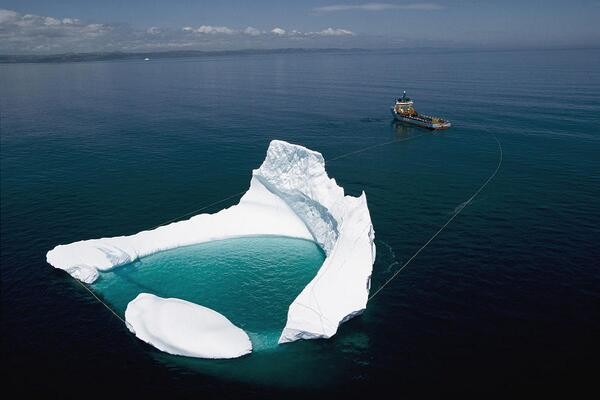California's current drought has resulted in some of the biggest and boldest proposals about how to solve the California water shortage. Such solutions existed during past droughts but were never implemented.
Among the California drought proposals is using huge plastic bags to float fresh water to California. One company has already used this method to supply water to Aegina, a Greek island.
Another of the California drought solutions is to tow icebergs to the state of California. The Ventura City Council seriously considered this proposal in 1990.
Yet another solution to the California water supply problem is to use a 2,000-mile-long pipeline to export the clear liquid from water-rich Alaska to California. The U.S. Bureau of Reclamation considered the idea in the 1970s, and Alaska then revived the idea in 1991.
Finally, California drought fixes also include building aqueduct pipes or canals to the Pacific Northwest region. This would access water in the Snake River and Columbia River.
The costs of these plans to solve the California water crisis would be extremely high, with price tags up to $150 billion. Also, they have also received little cooperation from other states, which have argued that California should use its water more wisely.
Another major problem with the solutions to the drought is that they could take years or even decades to transform theory into practice. In addition, that could only happen after the resolution of engineering, cost, and political issues.
In the water industry making solutions years or decades before potential situations is both common and required. However, California water restrictions have negatively affected water shortage solutions such as San Diego's new gigantic desalination plant, according to Fox News.
Steve Erie, a UC San Diego political science professor, explained that San Diego has been weighing drought solutions for over a century, according to UT San Diego. In 1915 city officials paid $10,000 to "rainmaker" Charles Hatfield to seed the city's clouds.
After Hatfield started work in January 1916, rains and flooding soon followed. There is much debate about whether Hatfield's methods actually produced the rain, but it gives hope that the 2015 California drought has potential solutions.



























